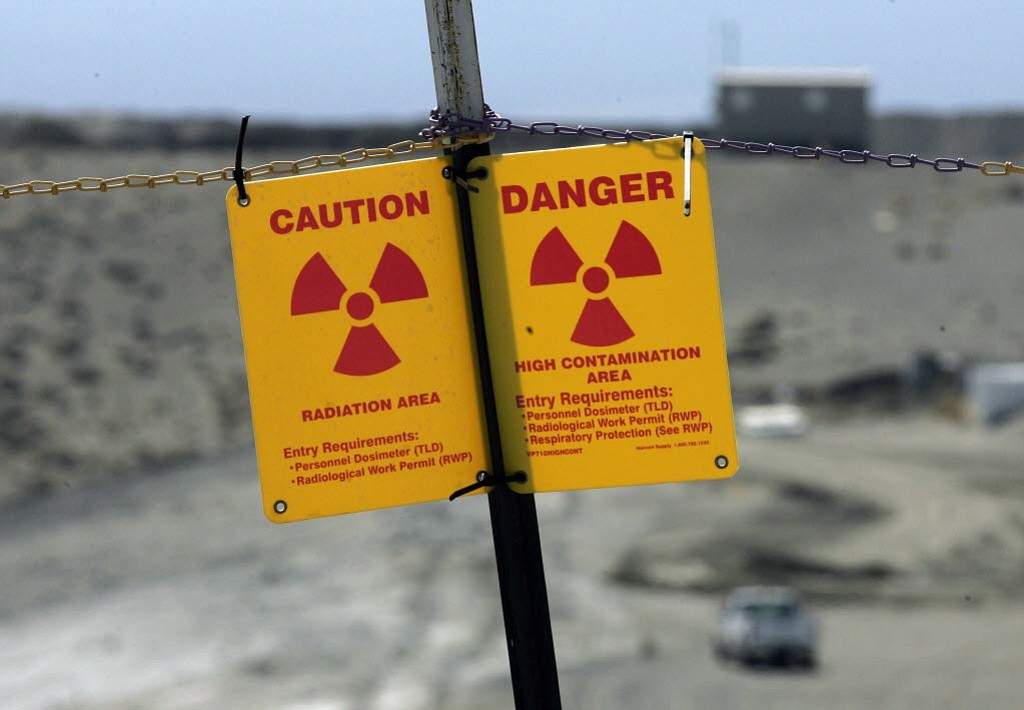RICHLAND — Researchers in Richland have done what the $17 billion vitrification plant at Hanford is intended to do — turn radioactive waste into a solid glass form.
Over about 24 hours last month researchers ran a laboratory-sized plant, dripping a radioactive waste mixture into a miniature melter inside the Pacific Northwest National Laboratory’s Radiochemical Processing Laboratory.
When they were done, they had 20 pounds of glass encasing actual Hanford waste.
“It’s a big deal,” said Dawn Wellman, sector manager for environmental health and remediation at the national lab in Richland. “At a scaled version we have done what they will do at full scale at Hanford.”
The vitrification plant — or Waste Treatment Plant — at the Hanford nuclear reservation has been under construction since 2002, with a court-ordered deadline of 2023 to start treating some of the 56 million gallons of radioactive waste in underground tanks.
Much of the waste, which is left from the past production of plutonium for the nation’s nuclear weapons program, is planned to be vitrified, or turned into a solid glass form for disposal.
In the past about a cup of waste at a time has been vitrified — but not in a way that really mimics the system to be used at the plant.
Scientists have not been able to determine in earlier tests how the plant’s process would control the chemistry of the mixture, which determines how well waste is contained within the mixture as vitrification progresses from liquid waste to molten glass.
“This is the first time low-activity Hanford tank waste has been vitrified in a continuous process, very similar to the treatment process that will be used at Hanford, rather than as a single batch,” said Albert Kruger, a Hanford Department of Energy glass scientist.
Results of the demonstration will be used to help DOE and its tank farm contractor, Washington River Protection Solutions, make plans for operating the vitrification plant. They commissioned the tests from PNNL, an expert in the vitrification field.
The Richland national lab developed liquid-fed ceramic waste melter technology in the 1970s that has become the standard for waste vitrification in the United States and internationally.
At Hanford, DOE’s plan is to separate some low-activity radioactive waste from the site’s underground tanks, leaving high-level radioactive waste for later treatment at the vitrification plant.
Hanford tank-farm contractor Washington River Protection Solutions delivered liquid waste to the PNNL lab, which is in the Hanford 300 Area just north of Richland.
The waste came from Tank AP-105, one of the site’s double-shell tanks in the group called the AP Tank Farm. The initial waste to be treated at the vitrification plant under construction is expected to come from that tank farm.
PNNL staff used the hot cells in its Hanford lab to pretreat the waste, with workers operating equipment from outside the hot cells to work with the waste as they looked through thick, leaded windows.
Low activity radioactive waste is primarily liquid, but solids and radioactive cesium in the liquids are designated as high level radioactive waste and must be removed if the waste is treated as low activity waste.
Workers used the same systems that will be used to prepare waste for the vitrification plant — a filtration system to remove solids and an ion exchange system to remove cesium.
With the worst of the radioactive materials removed, the waste then could be handled in laboratory fume hoods.
Two gallons of waste were mixed with one gallon of glass forming chemicals and then the liquid mixture was slowly dripped into a foot-tall steel container within a furnace. Liquid from the condensation was collected in an off-gas system, just as it will be at the vitrification plant.
About 9 a.m. on April 11, the test system was turned on, with the first waste fed into the melter system by late afternoon.
“We fed nice and constantly. It was a great run,” said Will Eaton, who led the test for PNNL.
The furnace heated the mixture to 2,100 degrees Fahrenheit, just as the melters at the vit plant are planned to do.
By about 9:30 a.m. the next morning, researchers had their 20 pounds of glass.
When cooled, it was shiny, black and opaque with low activity radioactive waste encased inside.
“This is kind of the confirmation that the real waste, which we don’t know that much about because we only take little samples of a huge tank, actually works the way we think it will work,” Eaton said.
Now researchers are performing analytic work on the glass, learning more about its chemistry.
And they are planning another vitrification test.
This test will use a sample from different AP Tank Farm tank, AP-107. The composition of waste varies among Hanford tanks.
“Being able to run real tank waste . . . through these tests provides valuable input for validating and refining our approach to the treatment of low-activity waste,” said Kris Colosi, the tank farm contractor project manager. “It’s another important step toward the removal and disposal of a large portion of Hanford’s tank waste.”



